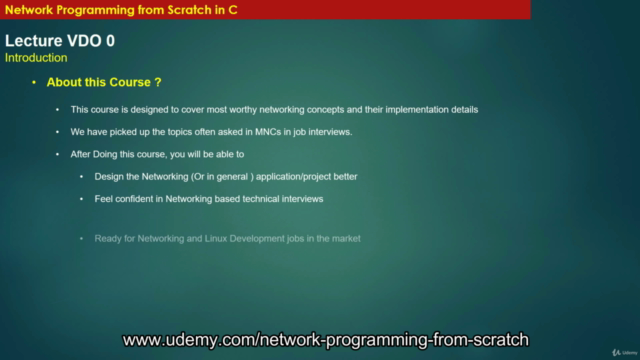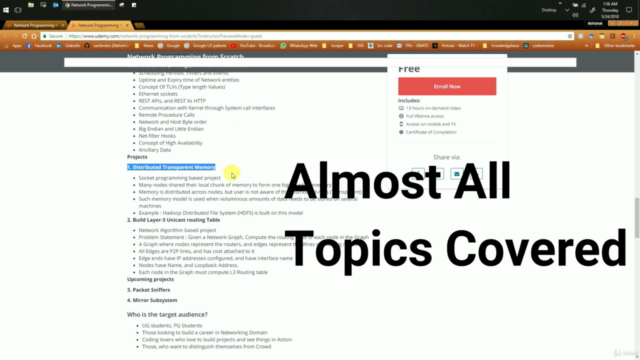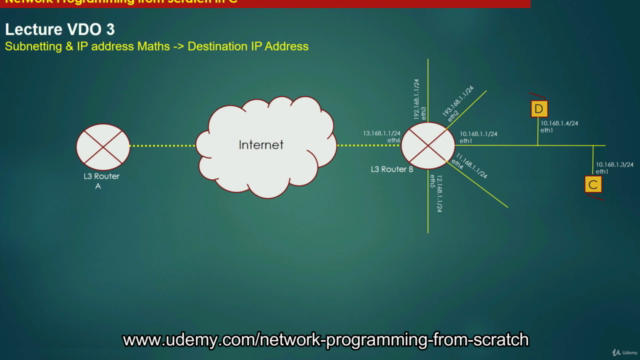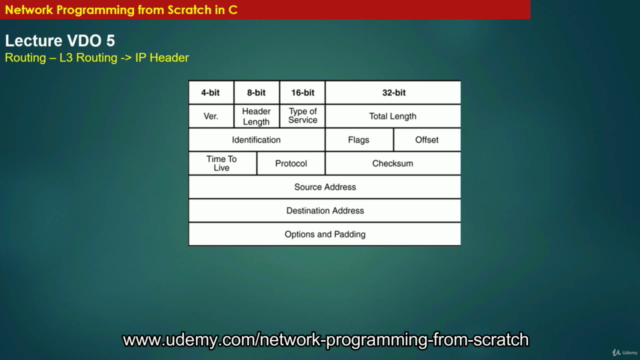Networking Concepts with Socket Programming - Academic Level
Networking course with socket programming concepts in depth with TCP/UDP/HTTP Socket Programming for beginners to expert
4.44 (893 reviews)

10,483
students
23.5 hours
content
Nov 2024
last update
$84.99
regular price
What you will learn
Confident at Answering Networking Related Question
Open up opportunities to Networking/System programming Companies
Get familiar with Linux and Learn Linux System programming side by side
Build Github portfolio, strengthen your employability
Decorate your Resume with projects done in this Course
Learn Networking concepts at all Layers of OSI Model
Course content has been designed keeping the MNCs interviews in Mind
Coding Assignments and Projects
Become a Networking professional Developer
Master designing and Writing TCP/UDP Servers in Linux environment
Build & Decode the complete packet from scratch
Concept of Packet Encapsulation
L2 and L3 Routing, Vlan based Routing
Screenshots




Related Topics
1668516
udemy ID
4/29/2018
course created date
4/27/2019
course indexed date
Bot
course submited by